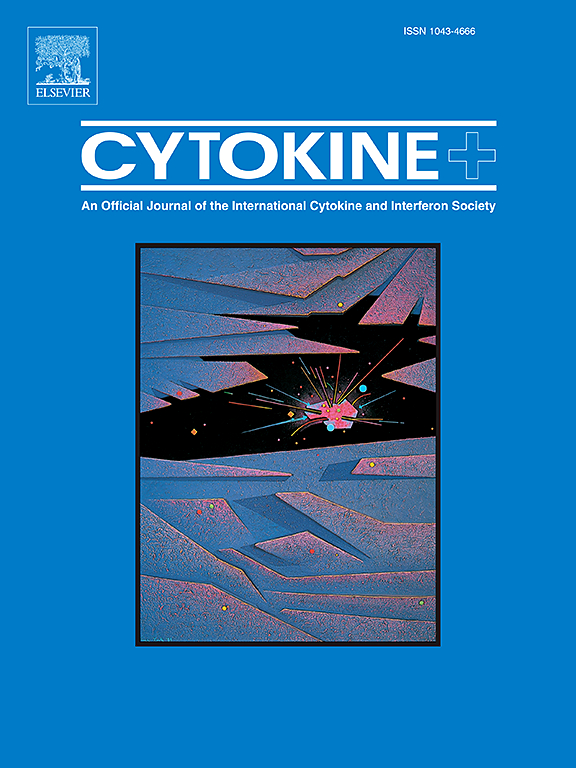兔热病的内质网应激标记物:一项病例对照研究
IF 3.7
3区 医学
Q2 BIOCHEMISTRY & MOLECULAR BIOLOGY
引用次数: 0
摘要
土拉菌病是由土拉弗朗西斯菌引起的人畜共患传染病。它由啮齿动物传播,并导致以淋巴结病为特征的传染病。本研究旨在探讨内质网应激在兔热病患者中的作用。这项前瞻性病例对照研究于2024年6月至8月在土耳其锡瓦斯共和国大学医院传染病和临床微生物学诊所进行。该研究包括40名年龄在18岁及以上被诊断为兔热病的患者。对照组由30名健康个体组成。比较两组患者血清内质网应激标志物(EIF2α、GRP78、CHOP)水平。患者平均年龄44±16岁,女性占72.5% (n = 29)。对照组患者平均年龄37±12岁,女性11例,占36%。兔吸虫病最常见的临床形式是口咽部(82.5%,n = 33)。兔血症患者组EIF2α、GRP78和CHOP水平显著高于对照组(p <;0.001)。虽然不需要淋巴结清扫的患者的内质网应激蛋白水平高于需要淋巴结清扫的患者,但差异无统计学意义。此外,在对治疗有反应的患者和对治疗没有反应的患者之间,内质网应激蛋白水平没有显著差异。本研究结果表明,兔吸虫病感染时,内质网应激分子CHOP、EIF2α、GRP78等均显著升高。这些数据支持内质网应激途径在兔热病发病机制中的作用。本文章由计算机程序翻译,如有差异,请以英文原文为准。

Endoplasmic reticulum stress markers in tularemia: a case-control study
Tularemia is a zoonotic infectious disease caused by Francisella tularensis. It is transmitted by rodents and results in an infectious disease characterized by lymphadenopathy. This study aims to evaluate the role of endoplasmic reticulum (ER) stress in patients with tularemia. This prospective, case-control study was conducted between June and August 2024 at the Infectious Diseases and Clinical Microbiology Clinics of Sivas Cumhuriyet University Hospital, Sivas, Turkey. The study included 40 patients aged 18 years and older diagnosed with tularemia. The control group comprised 30 healthy individuals. The serum levels of ER stress markers (EIF2α, GRP78, and CHOP) were compared between patients and control groups. The mean age of the patients was 44 ± 16 years, and 72.5 % (n = 29) were female. The control group had a mean age of 37 ± 12 years, and 36 % (n = 11) were female. The most common clinical form of tularemia was oropharyngeal (82.5 %, n = 33). Levels of EIF2α, GRP78, and CHOP were significantly higher in the tularemia patient group compared to the control group (p < 0.001). Although ER stress protein levels were higher in patients who did not require lymph node dissection than in those who did, the difference was not statistically significant. Additionally, no significant difference was observed in ER stress protein levels between patients who responded to treatment and those who did not. The results of this study indicate that ER stress molecules such as CHOP, EIF2α, and GRP78 exhibit significant increases during tularemia infection. These data support the role of the ER stress pathway in the pathogenesis of tularemia.
求助全文
通过发布文献求助,成功后即可免费获取论文全文。
去求助
来源期刊

Cytokine
医学-免疫学
CiteScore
7.60
自引率
2.60%
发文量
262
审稿时长
48 days
期刊介绍:
The journal Cytokine has an open access mirror journal Cytokine: X, sharing the same aims and scope, editorial team, submission system and rigorous peer review.
* Devoted exclusively to the study of the molecular biology, genetics, biochemistry, immunology, genome-wide association studies, pathobiology, diagnostic and clinical applications of all known interleukins, hematopoietic factors, growth factors, cytotoxins, interferons, new cytokines, and chemokines, Cytokine provides comprehensive coverage of cytokines and their mechanisms of actions, 12 times a year by publishing original high quality refereed scientific papers from prominent investigators in both the academic and industrial sectors.
We will publish 3 major types of manuscripts:
1) Original manuscripts describing research results.
2) Basic and clinical reviews describing cytokine actions and regulation.
3) Short commentaries/perspectives on recently published aspects of cytokines, pathogenesis and clinical results.
 求助内容:
求助内容: 应助结果提醒方式:
应助结果提醒方式:


